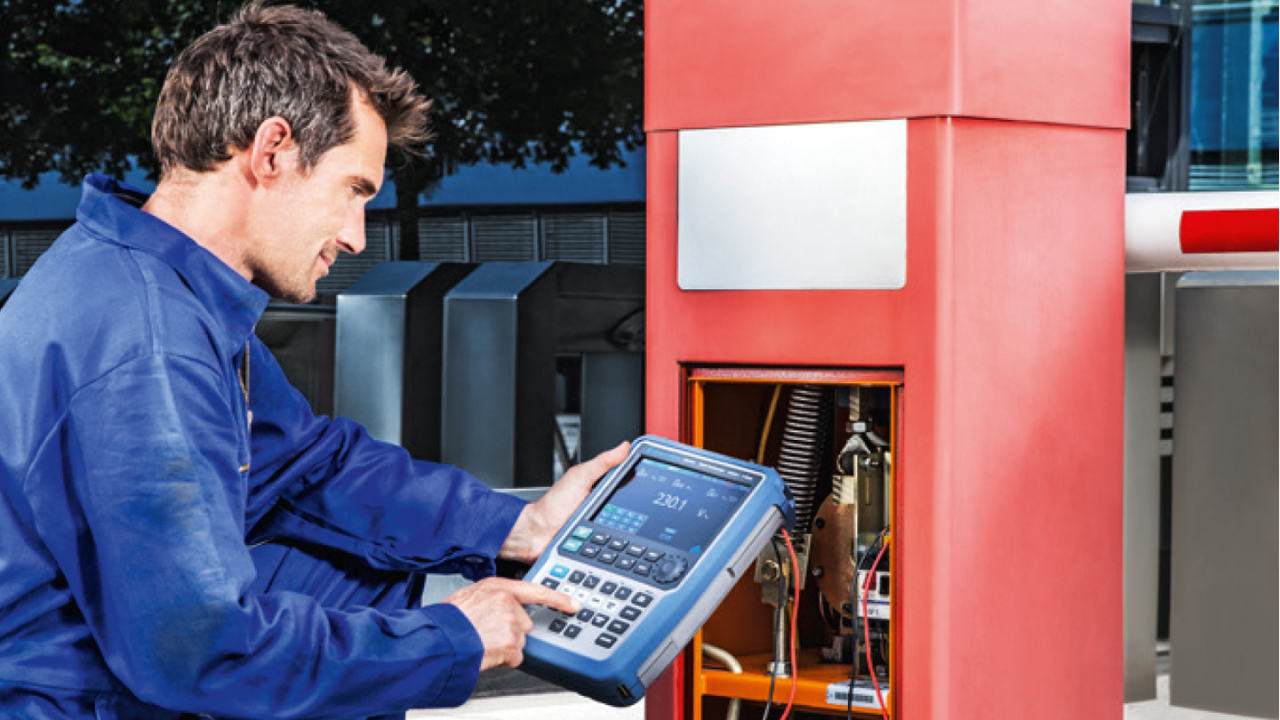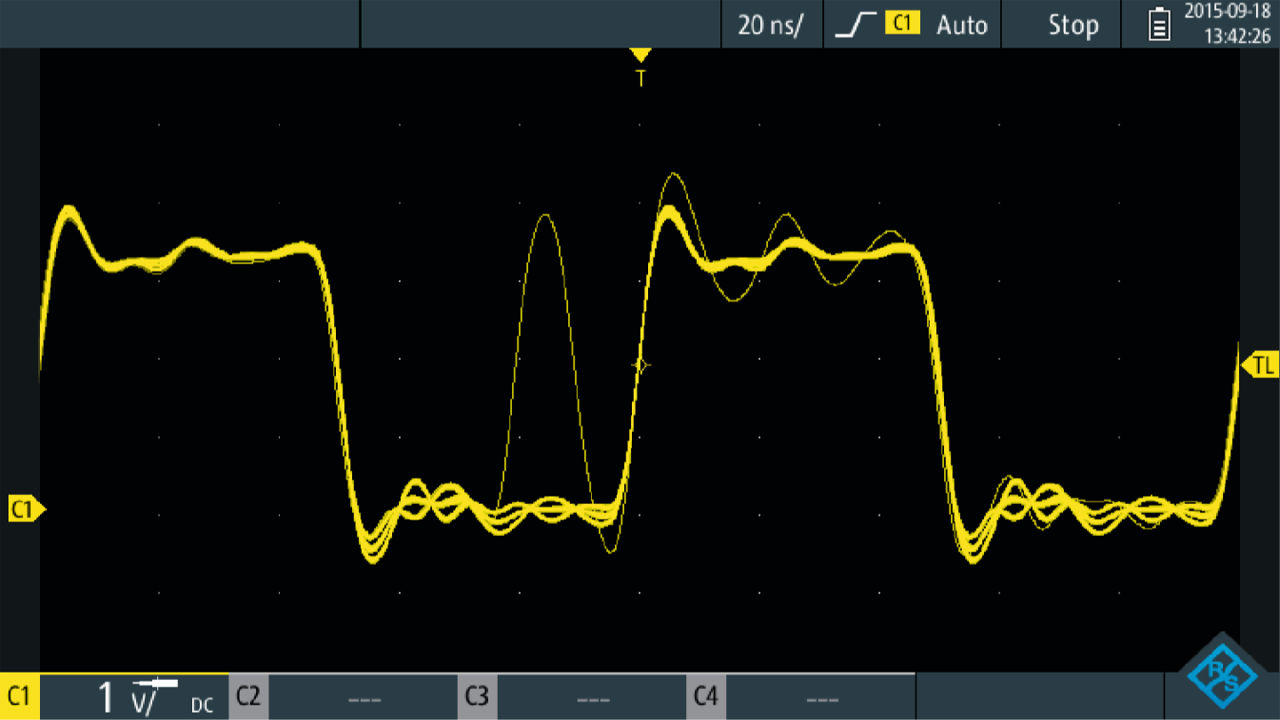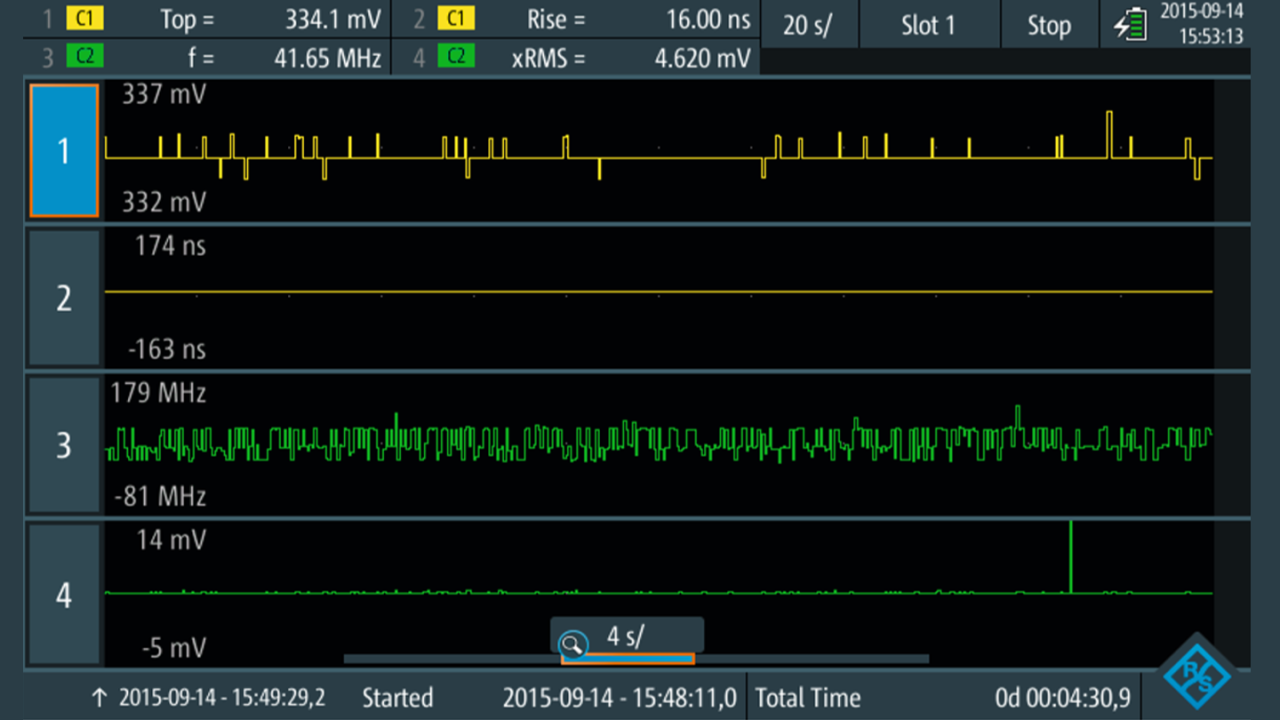T&M solution
The R&S®Scope Rider handheld digital oscilloscope combines the advantages of isolated channels up to CAT IV 600 V with the advanced functionalities of modern benchtop oscilloscopes in a portable design.
It is available in bandwidths up to 500 MHz, offers a maximum real-time sampling rate of 5 Gsample/s and provides 500 ksample of acquisition memory – extraordinary performance parameters for a handheld oscilloscope.
Available for the first time in a handheld instrument, the acquisition rate of 50 000 waveforms/s and a very precise digital trigger system offering a variety of advanced trigger modes enable the engineer to find intermittent signal faults quickly. Analysis functions, including 33 automatic measurements, the history function and the data logger, help find the cause of errors.
The R&S®Scope Rider additionally features logic analyzer and protocol analyzer capabilities made possible by eight digital channels (MSO) and various protocol trigger and decoding options (e.g. I2C or SPI). In combination with the isolated channels for operating on dangerous voltage signals, this makes the R&S®Scope Rider the tool of choice for debugging embedded power designs.








